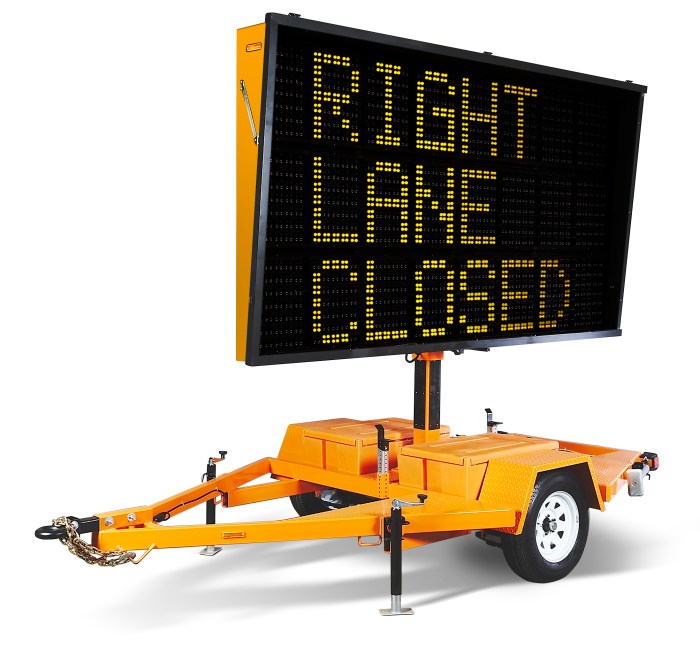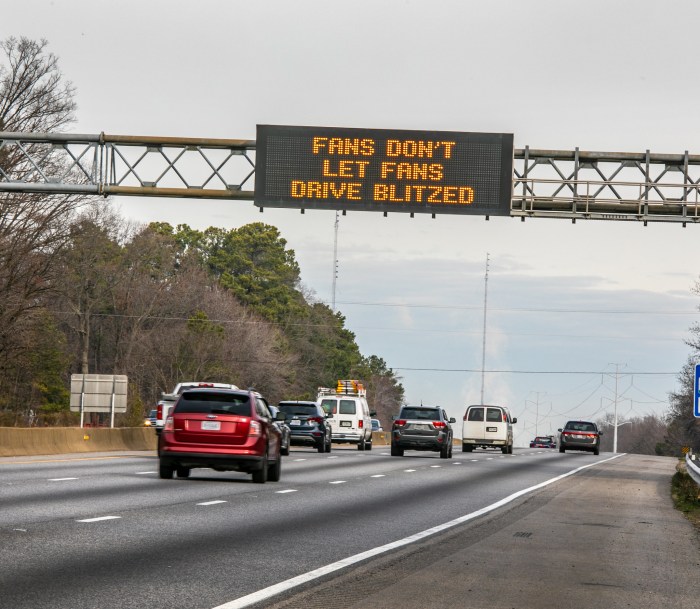Electronic highway message boards communicate critical information to motorists, playing a pivotal role in enhancing traffic safety and efficiency. These versatile devices employ various communication methods, display diverse message types, and leverage advanced hardware and technology to convey real-time updates, alerts, and guidance.
As we delve into the realm of electronic highway message boards, we will explore their multifaceted capabilities, examining the factors that influence their effectiveness and the emerging trends that are shaping their future.
Communication Methods: Electronic Highway Message Boards Communicate

Electronic highway message boards employ various communication methods to transmit information to drivers. These methods include:
- Cellular networks:Wireless communication technology that allows boards to connect to a central server and receive updates over the air.
- Fiber optic cables:High-speed data transmission medium that provides reliable and high-bandwidth connectivity.
- Microwave links:Line-of-sight wireless communication technology used to transmit data over long distances.
Each method has its advantages and disadvantages:
- Cellular networks:Advantages: Wide coverage, easy to deploy; Disadvantages: Can be subject to interference, data rates may be limited.
- Fiber optic cables:Advantages: High bandwidth, reliable; Disadvantages: Expensive to install, limited mobility.
- Microwave links:Advantages: High bandwidth, long range; Disadvantages: Line-of-sight required, susceptible to weather conditions.
Message Display and Content

Electronic highway message boards display various types of messages to inform drivers about traffic conditions, weather alerts, and public service announcements.Message content is influenced by factors such as:
- Traffic conditions:Real-time traffic data from sensors and cameras is used to display congestion levels, lane closures, and accident reports.
- Weather alerts:Weather conditions such as fog, ice, or heavy rain are displayed to warn drivers of potential hazards.
- Public service announcements:Messages related to safety campaigns, road closures, or special events are displayed to inform drivers.
Effective message designs consider factors such as:
- Clarity:Messages should be concise and easy to understand at a glance.
- Visibility:High-contrast colors and bright displays ensure messages are visible in all lighting conditions.
- Relevance:Messages should be timely and relevant to the driver’s current location and situation.
Hardware and Technology

Electronic highway message boards consist of hardware components such as:
- LED displays:High-resolution LED panels that provide clear and vibrant displays.
- Sensors:Detect traffic conditions, weather conditions, and vehicle presence.
- Controllers:Manage the display and communication functions of the board.
Technological advancements have improved the capabilities of these boards:
- Improved display technology:Full-color LED displays with higher resolutions provide more detailed and visually appealing messages.
- Advanced sensors:Traffic and weather sensors use artificial intelligence and machine learning to provide more accurate and real-time data.
- Remote management:Cloud-based systems allow boards to be managed and updated remotely, reducing maintenance costs.
Helpful Answers
What are the primary communication methods used by electronic highway message boards?
Electronic highway message boards primarily utilize wireless communication technologies such as cellular networks, Wi-Fi, and Bluetooth to transmit data and receive updates.
How do electronic highway message boards contribute to traffic safety?
By providing real-time information on traffic conditions, accidents, and road closures, electronic highway message boards help motorists make informed decisions, reduce speeding, and avoid potential hazards.
What factors influence the effectiveness of electronic highway message boards?
The effectiveness of electronic highway message boards depends on factors such as message visibility, clarity, and relevance, as well as the timing and location of the messages.